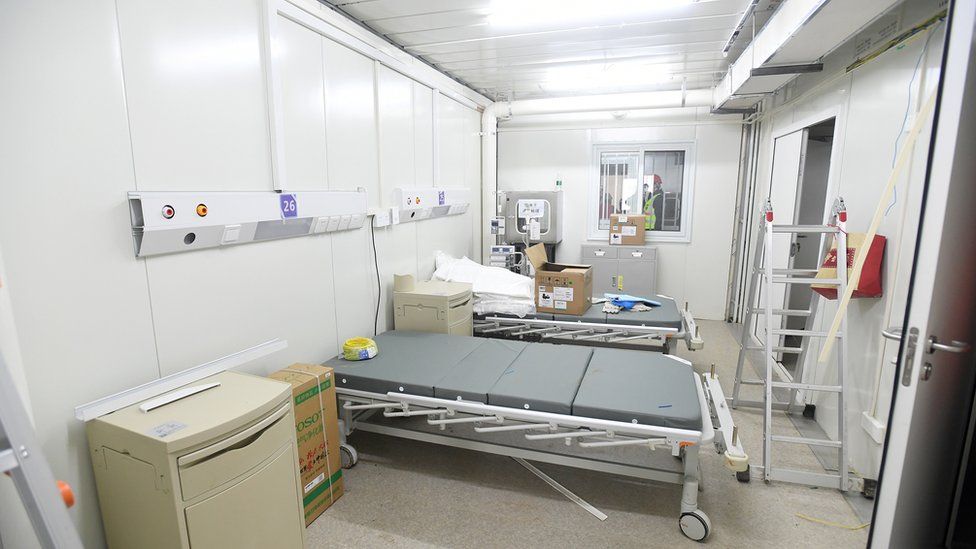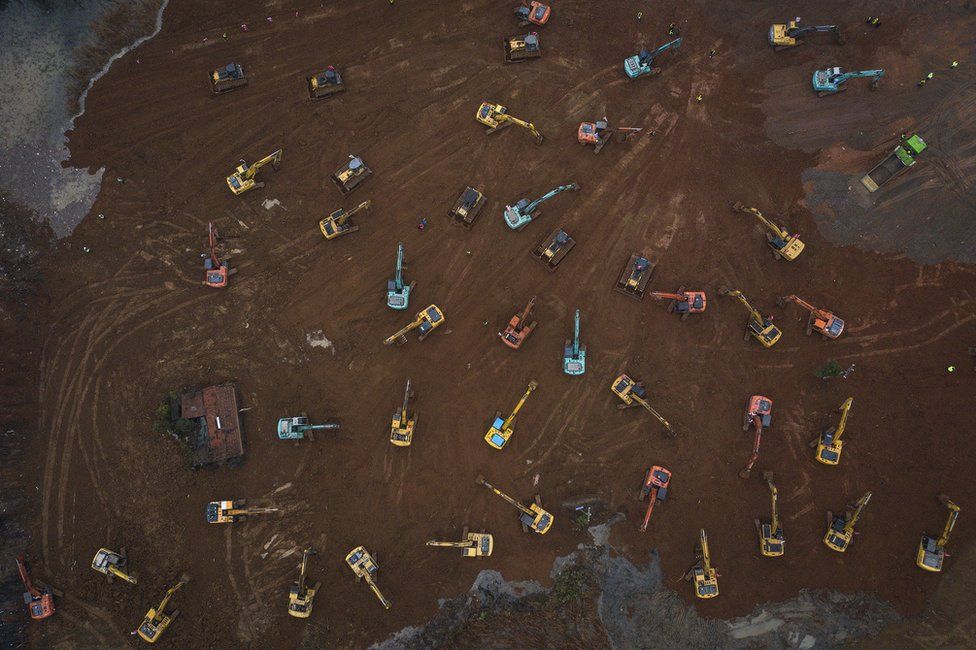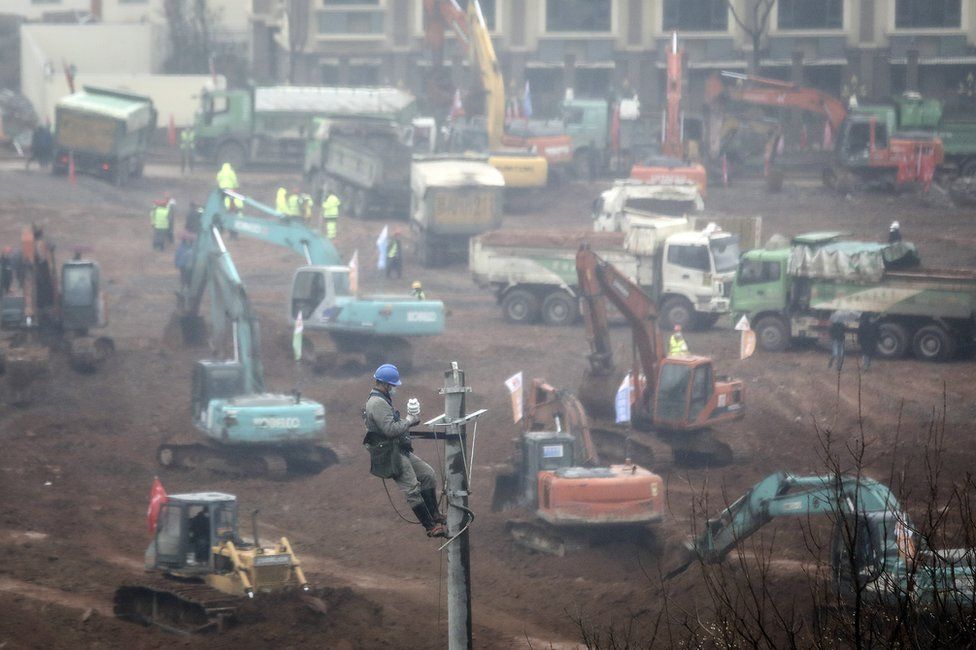China (Wuhan)
On the Monday of 3 February 2020, something magical happened in Wuhan, China. News outlets were reporting that a 1,000-bed hospital would be accepting patients – as construction workers were racing to complete it.
Imagining a hospital out of containers and building it in ten days is quite something.

People desperate for treatment started descending on the new makeshift emergency hospital that was built from scratch in just ten days to specifically cope with the outbreak of the new coronavirus.
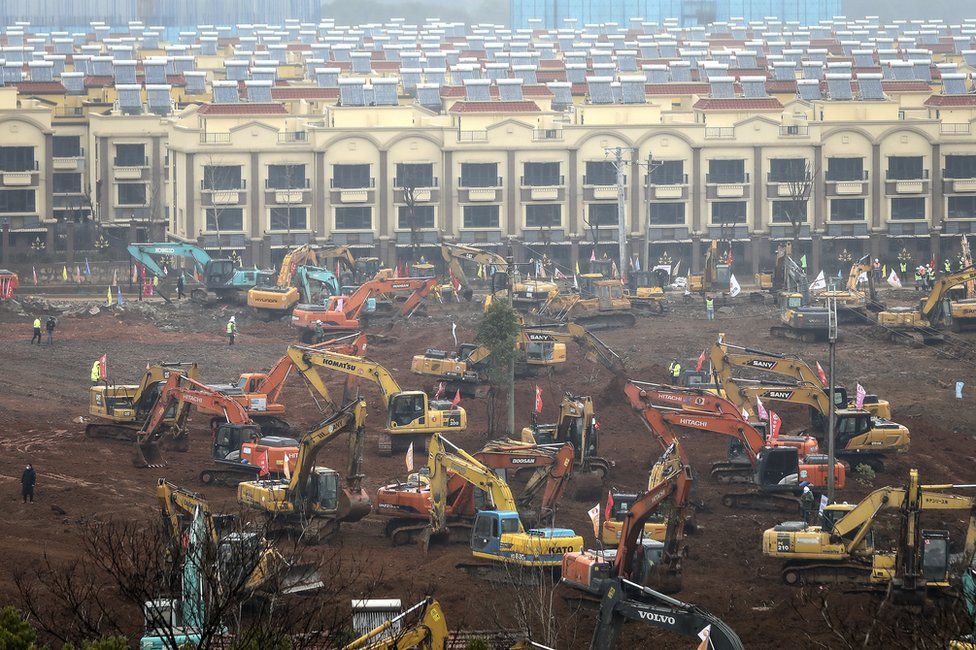
Construction workers in hard hats, medical staff in hazmat suits, and men and women in army fatigues scrambled around the dusty site on the Monday afternoon, dodging moving trucks, excavators and cranes. Workers were still trying to finish construction on the Huoshenshan Hospital — a name that means ‘Fire God Mountain’ – even as the facility prepared to accept its first batch of patients:
Xue Ying, a resident of Wuhan, had driven to the new hospital hoping to find help for his increasingly unwell cousin. But city officials and signs on checkpoints have said the hospital would not accept walk-ins. Admission was only for patients with officially confirmed coronavirus infections who were transferred from other facilities.
Construction teams of 7,000 workers with armies of trucks and excavators dug and scraped around the clock to complete the project. The city government is attempting a feat recalling the SARS epidemic of 2003, when Beijing built a hospital in a week.
For Beijing, the facility would also serve as a potent symbol of the government’s drive to do what needs to be done. The city government needed to build the makeshift hospital quickly using prefabricated units to ease a persistent shortage of hospital beds and medical supplies. Leaders pledged to build the 1,000-bed complex in 10 days and vowed that another new 1,600-bed hospital would be ready by 5 February.
Wuhan, a city of 11 million, has been eerily quiet since the authorities locked it down, preventing residents from leaving and severely limiting public transportation and private cars. But the roads around the hospital building site were packed with cement mixers, trucks and other construction vehicles.
Many migrant workers and suppliers of materials were roped in to build the complex. Workplace safety precautions included temperature checks to try to detect signs of coronavirus infections.
As for the technology: the hospital is supported by 17 information systems, which provide robust software and hardware foundations for the hospital’s efficient operation. In addition, a remote online consultation system has been built for medical experts to conduct video consultations.
The hospital is designed to minimise air and water pollution to avoid cross-infection and has high standard techniques for waste water disposal. The ground structure is separated from groundwater and soil by means of a physical approach, and polluted water is collected through an enclosed system. In addition, the quantity of disinfectants used to purify the water is greater than that used by many hospitals specialised in handling infectious diseases.
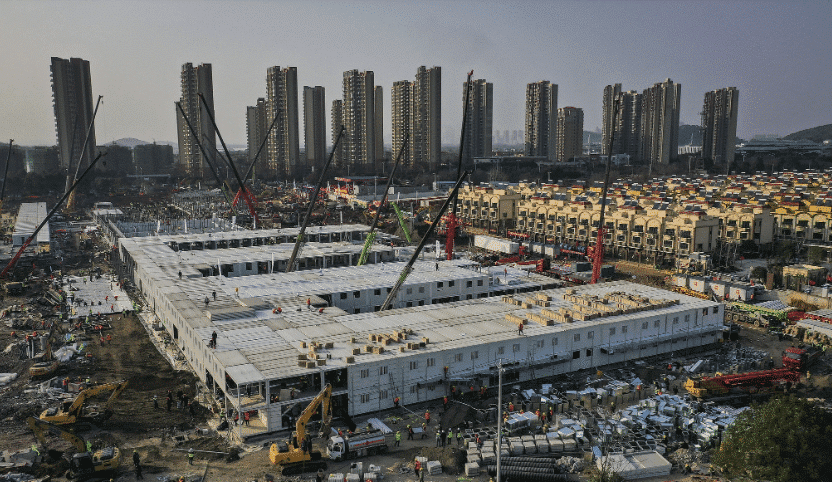
In the opening ceremony on Sunday 2 February, Zhou Xianwang, the mayor of Wuhan, officially handed the new hospital over to the military, which is now in charge of operations. Boxes containing ventilators and medical equipment still lay piled on a sidewalk on Monday. Trees sat in large trucks, ready to be unloaded. One volunteer offered free rides around the vast construction site on his flatbed tricycle. On a sign, he had scrawled: “Go, Wuhan! Go, Fire God Mountain!”
As promised, by the Monday evening, Chinese state media were reporting that ambulances had begun transporting patients to the new hospital. By the Tuesday this patient was showing off his room:
AtlasAction: Read: More projects related to being resilient in times of coronavirus.
Project leader
People's Liberation Army
Support the Atlas
We want the Atlas of the Future media platform and our event to be available to everybody, everywhere for free – always. Fancy helping us spread stories of hope and optimism to create a better tomorrow? For those able, we'd be grateful for any donation.
- Please support the Atlas here
- Thank you!
